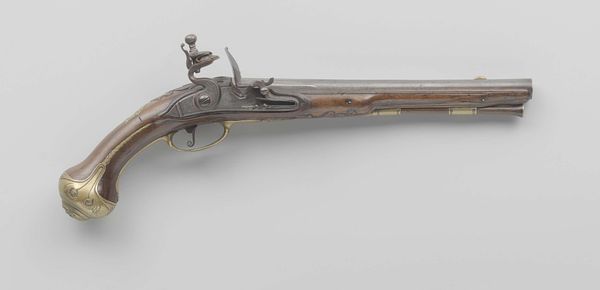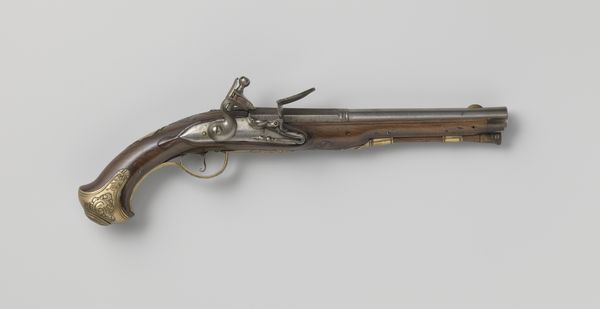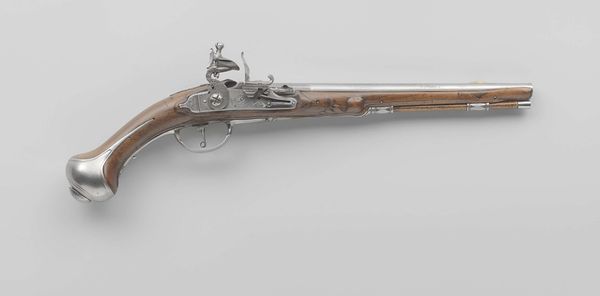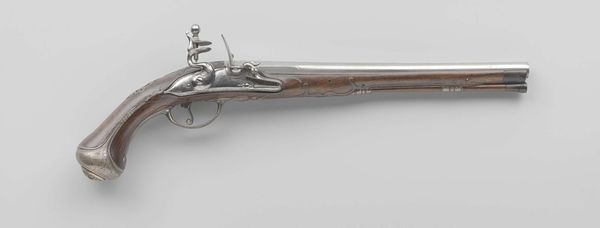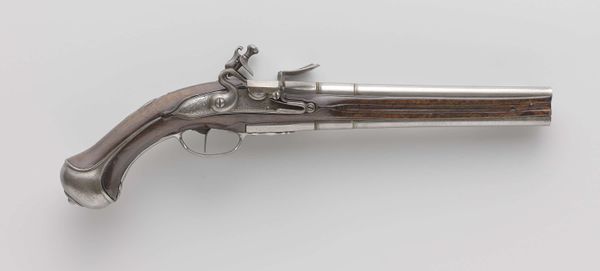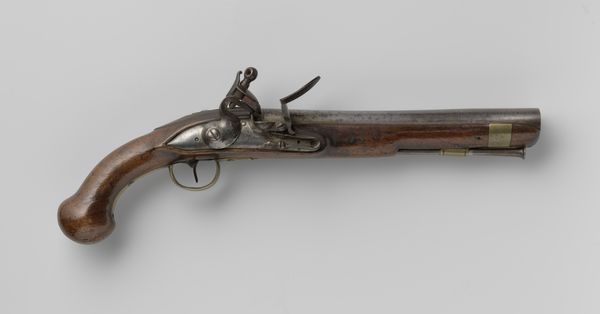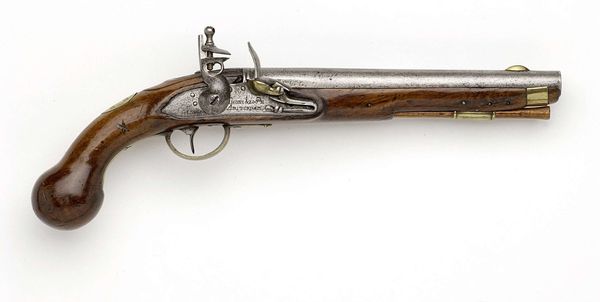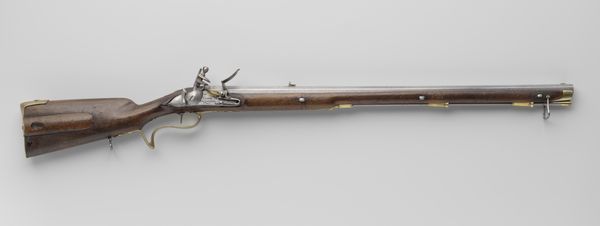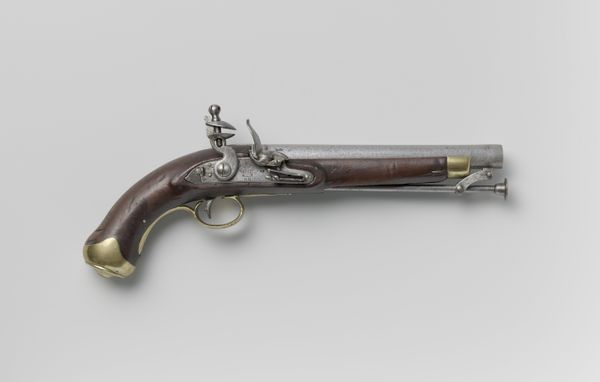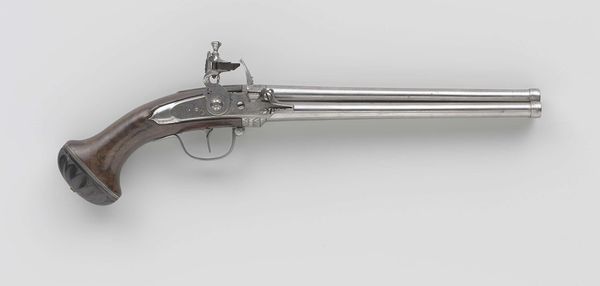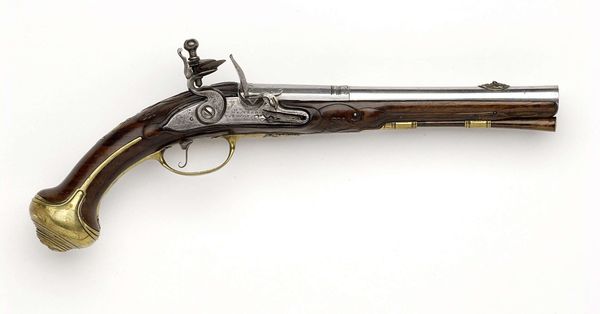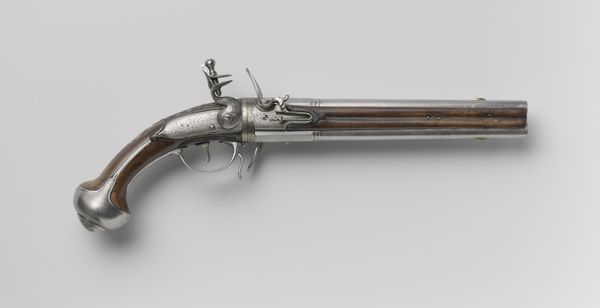
metal, wood
#
baroque
#
metal
#
wood
Dimensions: length 95.4 cm, height 21 cm, depth 13.5 cm, length 61.1 cm, diameter 16.2 mm
Copyright: Rijks Museum: Open Domain
Curator: Here at the Rijksmuseum, we're looking at a flintlock cavalry carbine. It dates back to between 1670 and 1680, and was crafted by Reyner Beckers. Editor: Its stark linearity, broken only by the curves of the stock, is somewhat unsettling, don't you think? It looks almost surgically precise. Curator: These weapons are much more than their intimidating form. The carbine represents a convergence of socioeconomic factors. Access to advanced metallurgy and woodworking were limited by class and status, and producing the weapon would have been a skilled and involved labor process. Editor: Absolutely. Consider the societal implications, too. Whose hands would wield it? In the Baroque period, weaponry was intricately tied to displays of power and control, often furthering colonialism, suppressing the marginalized, and advancing specific hegemonic masculine ideals. Curator: And who was doing the physical work of creating this object, the process of forging the metal? It seems quite cold as an object but very physical to make. How was this particular model shaped from wood and metal, and who were the artisans behind the craftsmanship? Did their identities become intrinsically connected to the weapon's power? Editor: Right. The wood's grain patterns are lovely but likely represent plundered natural resources used to perpetuate structures of inequality, and while the materials—the wood, the metal—speak of craftsmanship, they are also deeply implicated in stories of oppression. Curator: It raises critical questions about how material culture mediates both our violent impulses and also class stratification. Even its aesthetic, what we could classify as Baroque, could be studied as a projection of absolute power and masculine authority through its design. Editor: It certainly prompts reflections on how technology and power intersect with gender and race within particular socio-political contexts. Examining objects such as this forces us to have those tough, honest conversations. Curator: Yes. This weapon is not just a relic; it's a mirror reflecting historical oppressions, power dynamics, and it also causes us to consider production in seventeenth-century Europe. Thank you. Editor: Precisely, a potent reminder that even inanimate objects carry deep historical and social narratives.
Comments
No comments
Be the first to comment and join the conversation on the ultimate creative platform.
